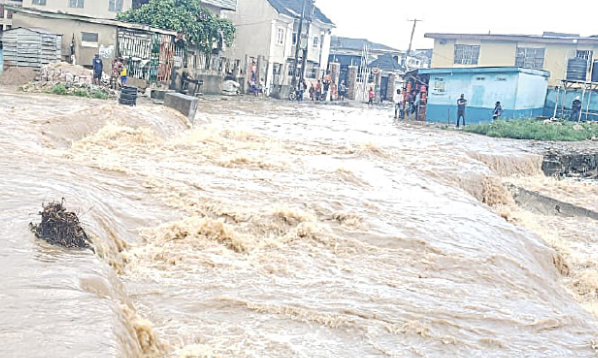
Amidst plans by the Federal Government to allocate fresh funds for conducting integrity tests on all dams in the country, findings have shown that a total sum of N179.77bn was allocated for the construction and rehabilitation of dams across the country over the past 10 years.
This is according to an analysis of budgetary allocations disbursed to the Federal Ministry of Water Resources and other related agencies between 2015 and 2024.
This amount indicates that significant financial resources have been committed to improving the nation’s dam infrastructure.
However, the recent collapse of the Alau Dam may suggest that the funds allocated for it may not have been properly disbursed to the implementing agency or used effectively.
The appropriation budget was used for this report because documents of budget implementation report were not available.
It was reported that the forced focus on government spending on dams emerged after a flooding incident that overtook 50 per cent of Maiduguri following the failure of the Alau Dam.
This incident, triggered by several downpours, resulted in catastrophic flooding in Borno State, claiming over 30 lives and displacing at least 400,000 people.
The dam, built in 1986 to serve irrigation and domestic water needs in Maiduguri, affected Kebbi, Kaduna, Sokoto, Katsina, Kwara, and Plateau, as well as parts of Cameroon after its collapse.
Experts say the dam collapse was bound to happen as the authorities had turned a deaf ear to prior warnings from environmentalists in and around the region.
According to the experts, there had been cracks in the dam’s walls, and erosion had taken over the embankments, a result of years of abandonment, which weakened its structure.
Similarly, a former Director of Northeast Development Commission, David Kente, had warned that the Alau Dam was in a precarious condition and on the brink of collapse, adding that the region could face even more catastrophic flooding without urgent repairs after the rainy season.
Sequel to the disaster, President Bola Tinubu directed a comprehensive integrity test on all dams in the country.
Nigeria currently has about 323 dams, including small, medium, and large dams, which are used for water supply, flood control, and power generation, among others.
Some of the dams include Bakolori and Goronyo dams in Sokoto State, Challawa and Tiga dams in Kano State, Dadinkowa Dam in Gombe, Ikere Gorge dam in Oyo, Jebba, Kainji and Shiroro in Niger, Jbiya and Zobe dams in Katsina, Kafin Zaki in Bauchi, Ede-Erinle Reservoir in Osun, Asejire in Oyo, among others.
Per the drafting of the budget, the Federal Ministry of Water Resources is responsible for executing these projects and the Chad Basin River Development Authority, under this ministry, serves as the implementing agency.
A breakdown of the budget between 2015 and 2024 showed that the government allocation for the preservation of the dams surged by 1,524.5 per cent from N2.72bn in 2015 to N44. 25bn within 10 years, highlighting a steady increase in budgetary allocations.
The report showed that a budget of N12.33bn was approved for dams in 2016, signalling an increase of 352.82 per cent from the allocation given in 2015. In 2017, the government allocated N19.986bn and N28.43bn in 2018.
This funding however reduced to N7.001bn in 2019 before it increased further by 116.2 per cent to N15.14bn in 2020.
In 2021, the government expended N16.72bn for the proper functioning of the dams and N20.95bn in 2022.
The figure, however, dropped to N12.24bn in 2023 before an astronomical increase to N44.24bn in 2024.
Analyzing the line items in the 2016 budget, the government allocated N10m for the rehabilitation of Alau Dam while N6m was apportioned for the procurement and installation of river gauge readers at the dam.